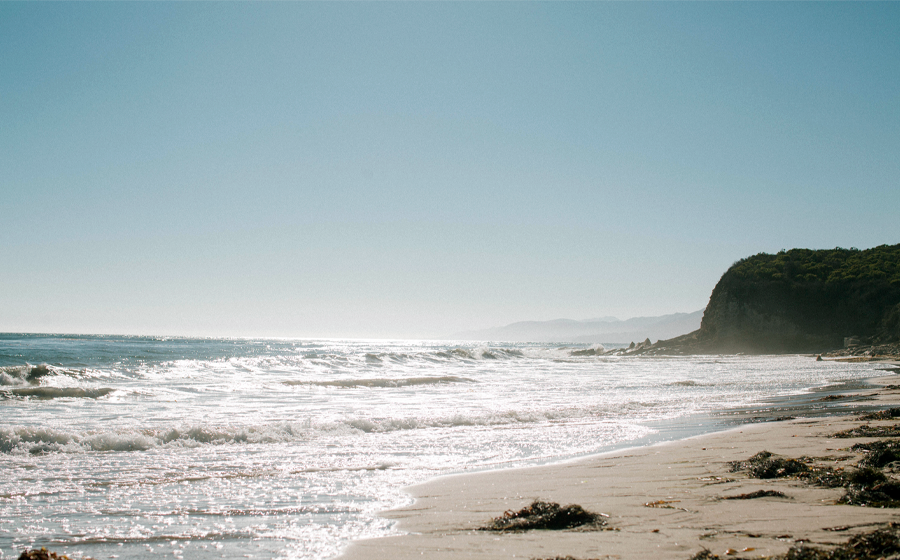
Marine and Bird Life Near Santa Barbara
The Santa Barbara coast and Santa Barbara Channel is one of the most diverse habitats for marine wildlife and birds in the Western United States. Whether you stroll the beaches, walk among the tide pools or explore the channel by boat, paddle board, or scuba you are sure to see plenty of sea life to make your visit memorable.
Of particular interest to naturalists are the waters surrounding the Channel Islands, which are just off the coast from Ventura and Santa Barbara. The area is so significant that it was protected as a marine sanctuary in 1980 and encompasses 1,470 square miles surrounding the five Channel Islands that make up the Channel Islands National Park.
The Santa Barbara Channel is situated in a unique life-rich transition zone, where cold water from Alaska meets warm water from the equator. Historically, it’s enjoyed a cool but comfortable average temperature of 60.8-62.6 degrees Fahrenheit. Today the warming seas have elevated the water an additional couple of degrees, which has brought in new sea life and threatened other species.
Now that our average is higher, we’re seeing more warm water fish make their way up from Baja California and San Diego to Santa Barbara. It’s not just fish, scientists are seeing different types of birds, whales, sharks, and urchins also coming to the area.
For fisherman depending on the season the waters around Santa Barbara are home to an abundance of Rock Fish, White Sea Bass, Halibut, Salmon, Ling Cod and others. You can also catch an occasional glimpse of a green sea turtle, Giant Sea Bass, rare Blue Fin Tuna and Great White Sharks. On the sea floor there is an abundance of Spinney Lobster, and Red and Purple Urchins.
If getting a glimpse of some marine mammals is on your vacation list, there are plenty to be found on and around the Channel Islands. Many species of seals and sea lions and whales and dolphins either breed on the islands or feed in the food-rich waters of the Santa Barbara Channel.
A boat trip to the islands can lead to sighting of huge pods of common dolphins and smaller groups of Risso’s dolphins. Occasionally rare pacific white-sided and bottlenose dolphins can also be seen. Dolphins feed on anchovies and other small fish that move around the channel.
During the winter, Pacific grey whales migrate between summer feeding grounds in Alaska and breeding areas in Baja, Mexico, passing through the Santa Barbara Channel. Gray whales are often popular sights on local whale-watching trips between December and March. Other whale species such as humpbacks, blue, and orcas are less common, but can occasionally be seen during the summer when they come to the channel to feed.
California sea lions are often observed by boaters on sea buoys and offshore rocks, and are frequently encountered by divers and snorkelers in the kelp forest. Less often seen by most people are the enormous colonies of sea lions and seals that come to island beaches to breed. At Point Bennett, on the west end of San Miguel Island, hundreds of thousands of northern elephant seals, California sea lions, northern fur seals and harbor seals all breed at varying times throughout the year. The sight is amazing, and can only be seen by lucky visitors who make the trip out to San Miguel Island and then take a six mile hike out to the Point.
You don’t have to travel far or even get wet to enjoy the stunning variety of bird life in and around the shoreline of Santa Barbara and the Channel Islands.
The Channel Islands provide a vital habitat for seabirds and shorebirds, providing nesting and feeding grounds for 99% of seabirds in southern California. The area is also an important wintering site and stopover point for shorebirds. Thirty shorebird species have been recorded, including snowy plovers, willets, wandering tattlers, whimbrels, black turnstones, and sanderlings. The islands host half of the world's population of ashy storm-petrels and western gulls. It is also a resting place for 80% of the U.S. breeding population of Scripps's murrelets. The islands are also home to the only major breeding population of California brown pelicans in the western U.S.
What to Pack for a Wildlife Sightseeing Trip in the Santa Barbara Area
• Binoculars
• Hat and Sun Screen
• Oil Slick Beach Tar Remover (natural seepage of oil in the Channel can get tar on your feet, shoes and water-sports equipment) all-natural Oil Slick gets it off quickly without harming the environment.
• Bird Watching Guide Book
• Cell phone or portable camera for taking photos

